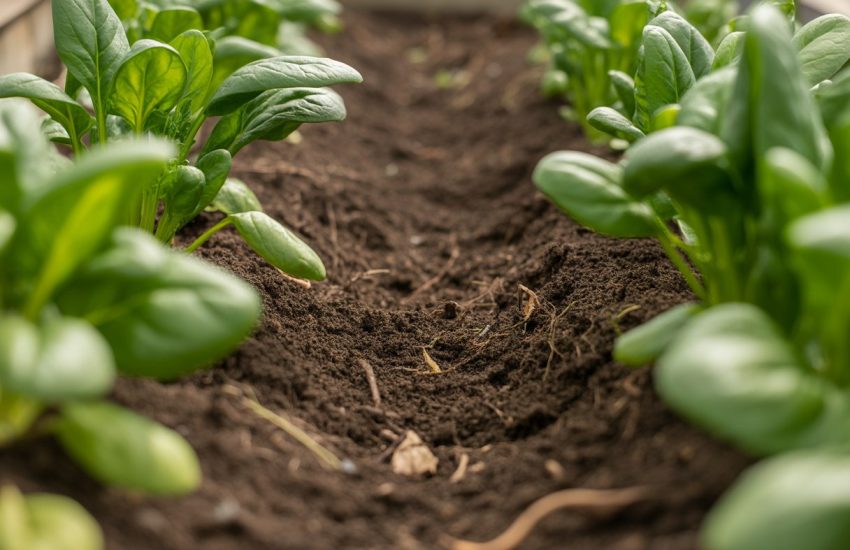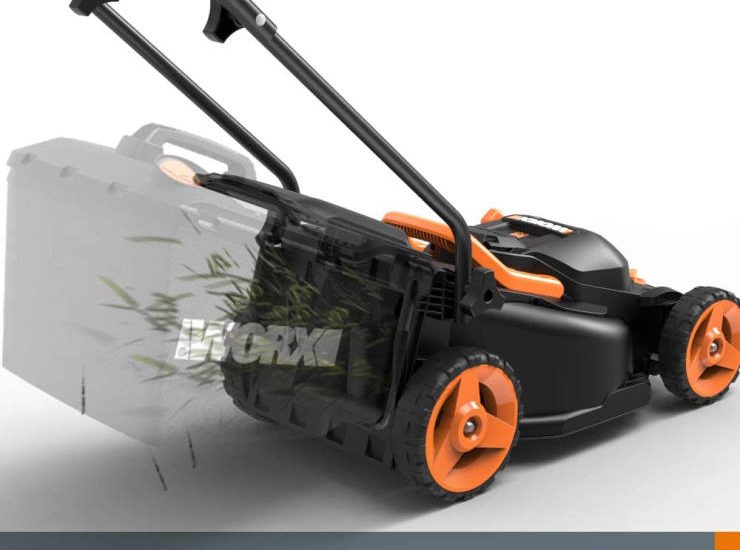10 Best Herbs For Your Garden
Nothing compares to cooking with fresh herbs from your garden. Owning your pick of ingredients to cook and season with is one of the best benefits of having your herb garden. Most herbs are simple to cultivate both inside and outdoors with just a little bit of love and attention, whether you have a sizeable outdoor vegetable patch or a modest indoor garden.
If you decide to grow them indoors, exercise caution not to overwater and ensure your plants have adequate room to expand. It would help if you kept an eye out for weeds and pests in your backyard that could harm your herbs.
Did you know that having herbs on hand is a terrific way to get outside in the garden and that herbs can also have amazing mood-boosting effects? They’re also a great gardening option for families with young children because of their small size and quick growth.
Discover the best garden herb plants and how to grow herbs at home.
5 Things to Remember When Growing Herbs
1. Any relatively fertile, well-drained soil can be used to cultivate herbs. Create raised beds or plant herb seeds in pots when drainage is a concern.
2. For cultivating herbs, good, all-weather access is essential. Better still, if a straight, reflective, light-colored path can be made. In the herb garden at RHS Wisley, pebble/concrete panels reflect light into the plants and create warmth to combat chilly nights.
3. Herbs typically don’t require much fertilizer and can thrive without heavy feeding. Overfeeding can reduce the intensity of the flavors.
4. Most herbs require an alkaline to neutralize the soil.
5. Herbs should be planted in the garden area that receives the most sunlight to help them taste their best.
What are the Best Herbs to Grow in your Garden?
Calendula
How to Grow Calendula: Calendula is an annual that is simple to grow. After your area’s last frost date in the spring, plant seeds in standard garden soil. Although a severe frost can kill the plant, it frequently self-seeds and will reappear in unexpected places the following year.
Since calendula is also known as pot marigold, some people mistake it for marigolds. It becomes. Calendula flowers are well known for their antibacterial and calming effects on the skin. Calendula-infused oil can be used to make a salve that can be used as a safe and soothing remedy for diaper rash, bug bites, rashes, scrapes, and minor cuts. Calendula-infused soap (or tea) can help calm skin irritated or inflamed by eczema, poison oak, or ivy.
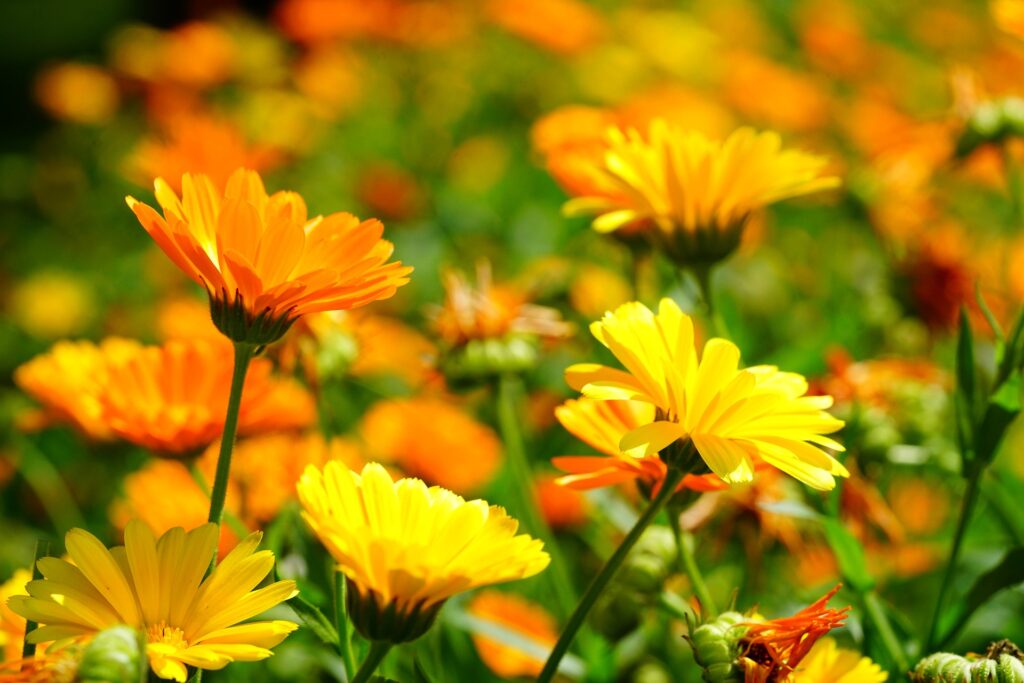
Chives
How to Grow Chives: Chives are an excellent addition to your kitchen garden as they are a hardy perennial and are particularly simple to grow. They were previously hung in bunches around the home to ward off evil spirits, but these days, with their lovely purple flowers, they are well-liked as border plants.
Chives are very adaptable because the entire plant is edible. Their leaves and bulb are edible, and their blossoms can be harvested as garnishes. Chives with a mild onion can be added to omelets, soups, traditional potato salad, and other summertime fares.
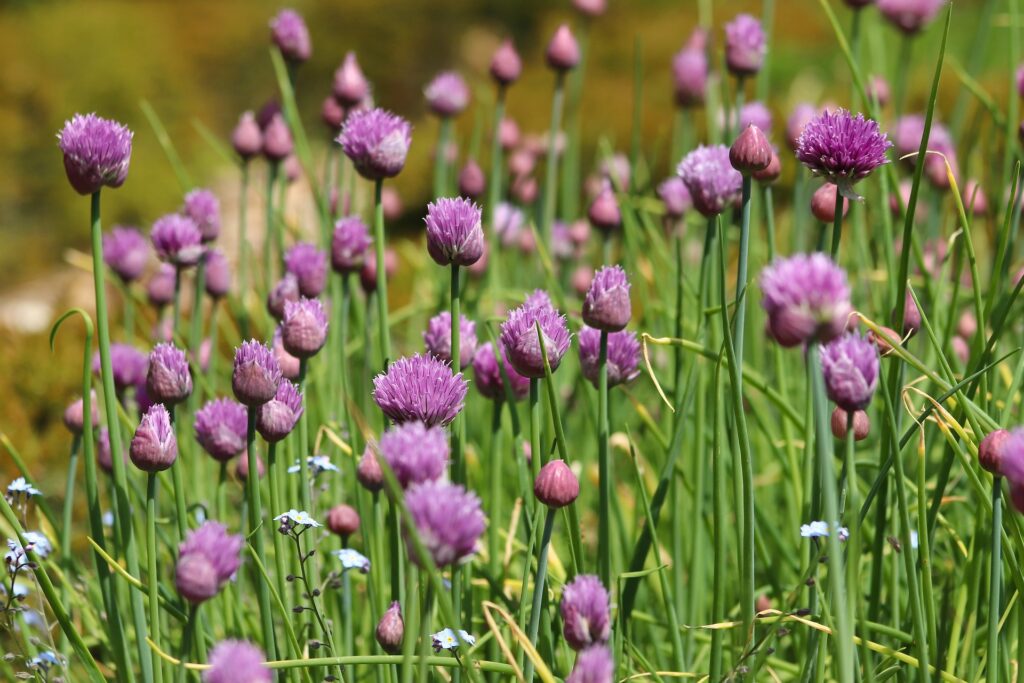
Lemon Balm
How to Grow Lemon Balm: You can typically get lemon balm plants at your neighborhood nursery or garden center. You may grow it from seed, but once it’s established, one plant will provide you with plenty. Give the plant lots of room to spread out because it will take over any location you put it.
The perennial lemon balm reacts well to being pruned back several times throughout the growing season and prefers moist, well-drained soil. (It also thrives in our arid, thick clay soil, so it is not very picky.)
When consumed internally, lemon balm is a gentle, mild way to encourage relaxation and sleep and is excellent at calming jitters. It’s also a fantastic antiviral and frequently treats cold and flu symptoms in the winter. It is one of the best herbs for curing cold sores. It is also an effective remedy for colic and an upset stomach.
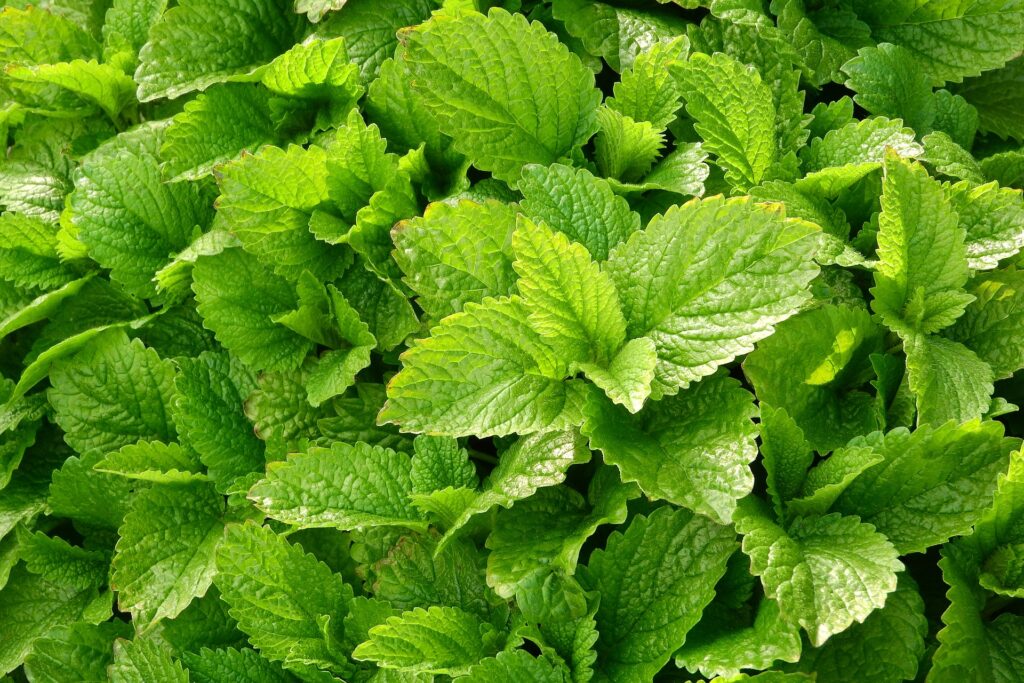
Mint
How to Grow Mint: Mint, also known as peppermint, spearmint, and others, is a perennial flower that favors a damp location in the garden. When a mint plant is established, it will consistently produce abundant leaves for your usage and experimentation. You should put your mint plant in a container or an inconspicuous garden area because they can spread aggressively.
Numerous mint variations are available, including chocolate, orange, spearmint, and peppermint.
The herb mint is calming and revitalizing. When applied to the forehead and temples, a minty salve works wonders for sore muscles and relieves headache pain. It’s also a traditional treatment for nausea and upset stomach. Even the smell of mint can energize and lift your mood.

Rosemary
How to Grow Rosemary: Rosemary is a herb that may be used in various dishes and grows well in gardens all year round. It requires so little care that you can plant it and then completely forget it. During the darker seasons of the year, it can survive without sunlight.
The needle-like leaves can be used to spice up roast lamb. Additionally, they can be included in handmade bread, robust soups, and stews. To drizzle over salad leaves, clip off a few sprigs and place them in a bottle of olive oil or white wine vinegar.

Tarragon
How to Grow Tarragon: Bring tarragon indoors before the first frost and keep the plants alive on the windowsill. It grows best in pots of coarse compost on the patio. Every three to four years, divide and repot to ensure a steady supply of healthy plants. French tarragon leaves have a peculiar flavor and aroma similar to licorice. Fish, meat, vegetables, eggs, salads, sauces, and vinegar can all be flavorful iced with tarragon.
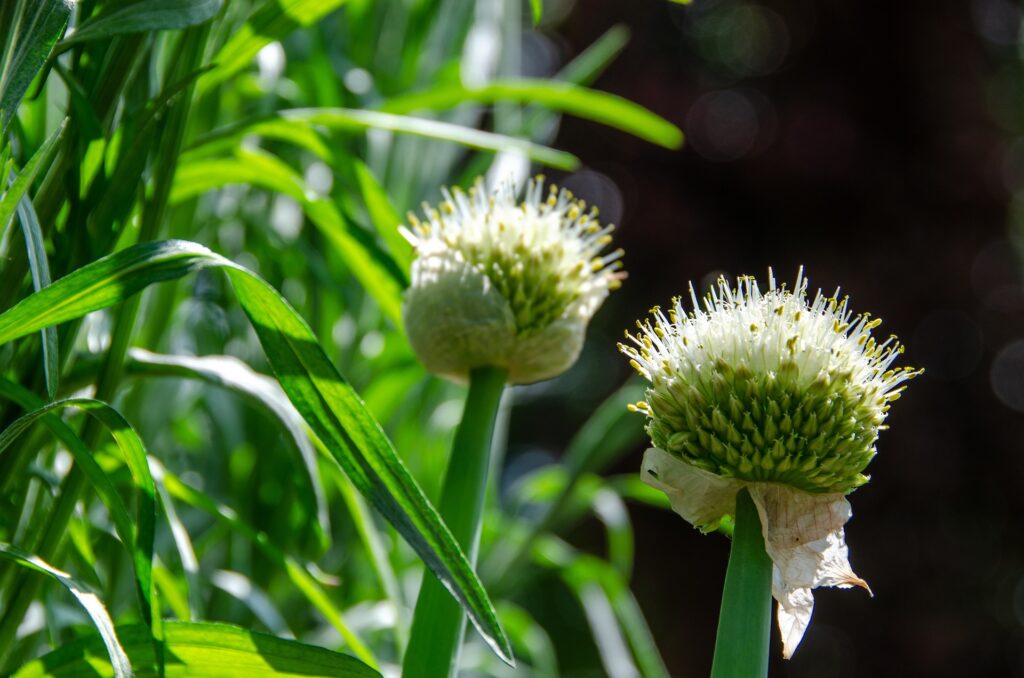
Fennel
How to Grow Fennel: Fennel is native to the Mediterranean but can be quickly grown from seeds and makes a beautiful addition to your landscape.
Fennel is a hardy perennial, but it is frequently sown yearly to sustain a yield. It is a fantastic component for sweet and savory meals due to its intense perfume and aniseed flavor.
Young, fragile leaves from this plant are utilized in sweet, sticky sauces, delectable puddings, salads, soups, garnishes, and fish sauces. The entire plant is edible, which gives it a lot of uses.

Basil
How to Grow Basil: Basil likes to grow in containers on a covered patio or a kitchen windowsill and requires well-drained soil. Basil plants will flower at the end of the summer and generate seeds that can be stored for sowing the following year. Basil enjoys warmth and light, so place it on a south-facing windowsill away from drafts. After a few weeks, it will grow woody, so keep replacing it frequently. Use in salads, pizzas, and pasta dishes that contain tomatoes.
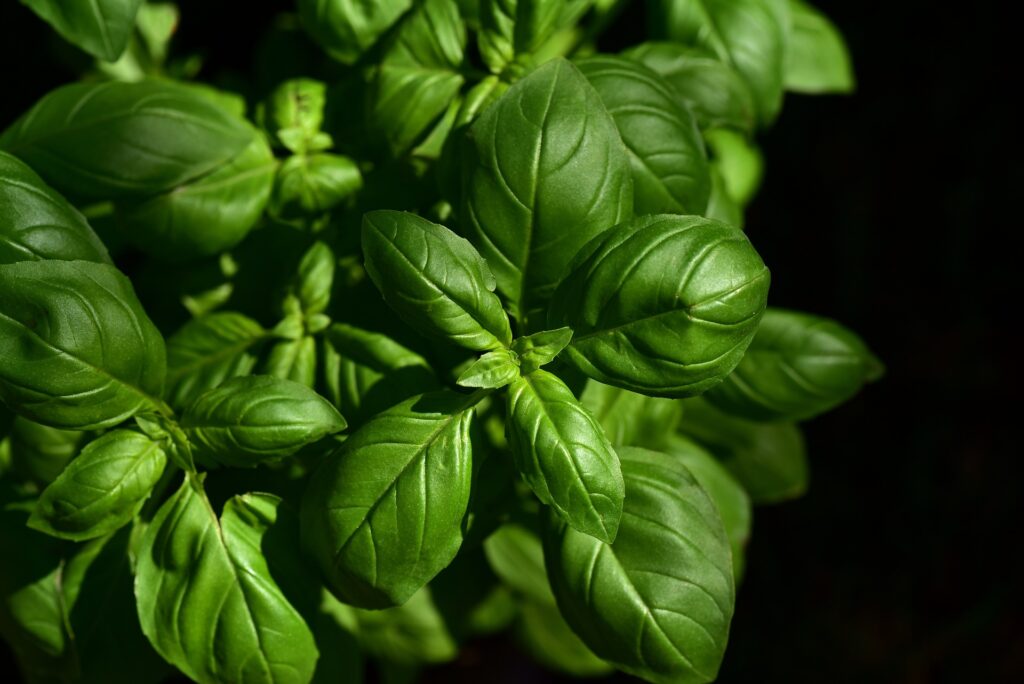
Oregano
How to Grow Oregano: Plant seeds in the spring, and young transplant plants outside when the threat of frost has passed. While sunlight is necessary, most soils can be tolerated as long as they are not flooded in the winter. Bring the plants indoors towards the end of the summer and place them on a sunny windowsill. Trim the stems and remove the leaves to add to tomato sauces for meat dishes, casseroles, soups, stews, pasta, and pizza.
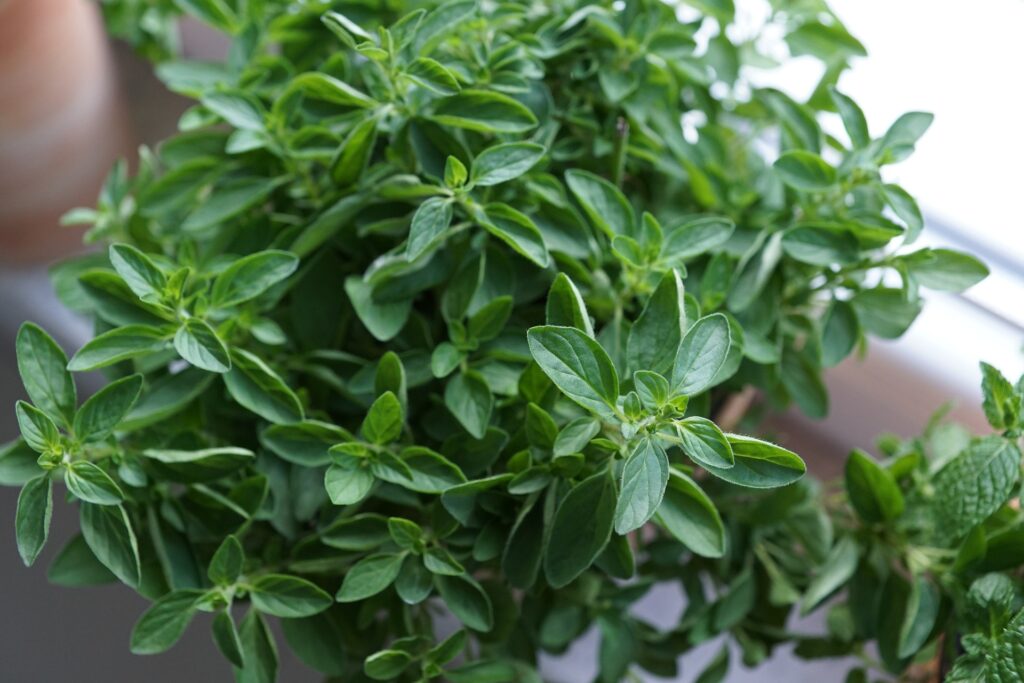
Lavender
How to Grow Lavender: A perennial, lavender prefers whole light and soil that drains well. It dislikes climates with a lot of humidity or moisture. Lavender can be grown from seed, but I’ve found it somewhat laborious, so you might find it more convenient to hunt for plants at your neighborhood nursery or garden center.
Lavender is a mildly elevated herb that can help people who are depressed or stressed. Additionally, it has soothing effects that aid in relaxation and the treatment of insomnia. You can apply lavender salve to your forehead and temples to ease tension headache symptoms. Some baked goods contain lavender. The leaves are also helpful.
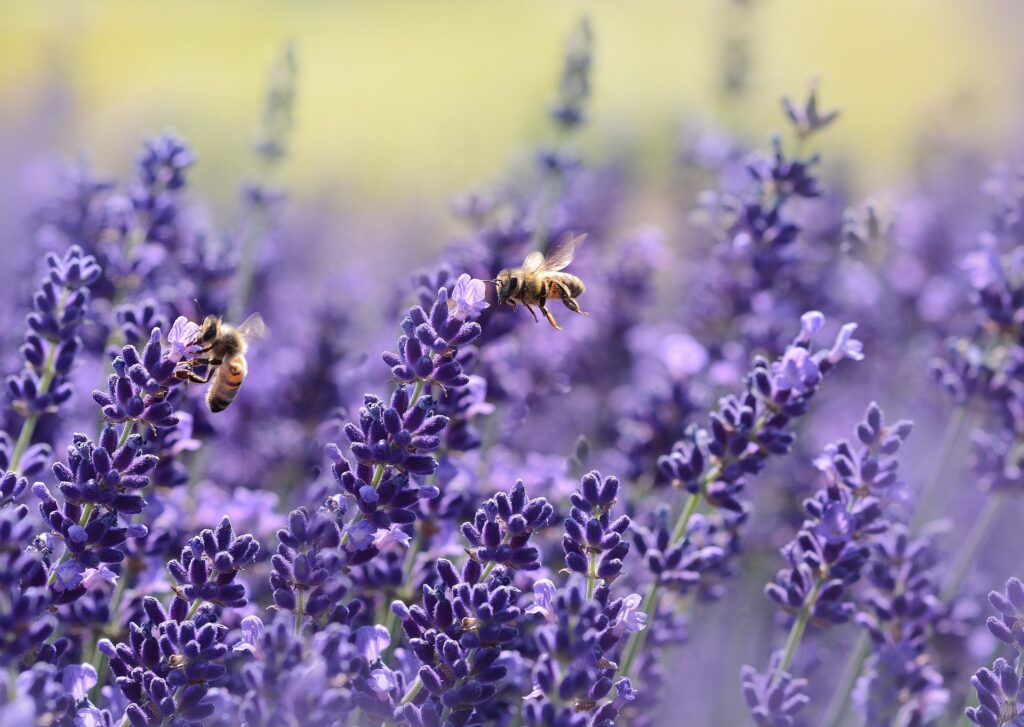
Conclusion
Herbs are essential in every garden because they have lovely foliage and blooms, which are alluring to pollinators and may be used in cooking, teas, cocktails, and herbal treatments. You may always have fresh herbs on hand by growing your own from seeds or ready-grown plants, which is considerably more affordable than purchasing packages of chopped herbs from the store. You’ll also get to sample a lot more flavors.
And because it’s so simple to produce herbs in kitchen gardens, home cooks can always have a supply. Why buy herbs at the total retail price? Growing your herbs is the best way to give food a ton of flavor. They give the flavor a depth that dried herbs cannot duplicate.
FAQ
The most straightforward herbs to cultivate are those that can be purchased in pots and are perennials, such as rosemary, mint, chives, and oregano. One of the fastest-growing herbs is cress, and chives are similarly simple to cultivate from seed (see below). A perennial herb continues to grow year after year.
The majority of culinary herbs require well-drained soil to grow. You must lighten the soil if you have heavy clay. If growing annual herbs, dig in some well-rotted compost; if you’re growing Mediterranean herbs, add horticultural grit. Fill a raised bed for growing herbs with garden center dirt and horticultural grit.
Place the plants before you plant them so you can make sure their positions are correct.
The original cut-and-come-again crop, culinary herbs, profit from regular harvesting. It is essential to routinely harvest annual herbs to prevent them from going to seed.
After you have harvested your herbs, feed them with comfrey or seaweed. Mediterranean herbs get more brutal to tolerate hot, dry spells with the help of a high-potash tomato feed in the middle of summer.

